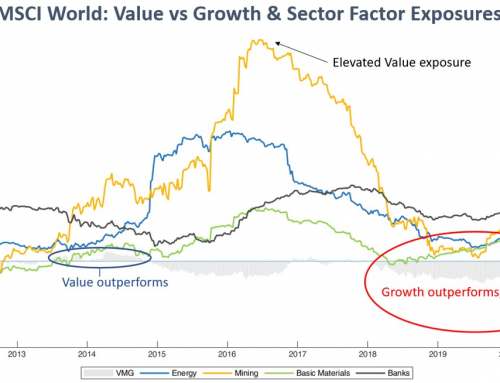The US equity market (S&P500) experienced a drawdown of 10% since 26 January 2018 and is now experiencing higher levels of volatility.
Most portfolios will continue to hold their strategic asset weightings irrespective of changing market conditions – even if equity markets fall by another 10%, 20% or 30%. Just as they did in the GFC.
Although investors prefer a steadier journey, they continue to be told that there is no better way other than to ride out the storm whenever the market turns.
We disagree.
We think about risk the way investors do and manage it in a way they value and understand. Rather than adopting a set and hold approach, we apply a risk-based approach to stabilise portfolio risk. In order to manage portfolio risk, you need to be able to measure and dynamically monitor market risk factors. As specialists in portfolio risk management, this is what we do, each and every month.
The objective of our risk models is to provide investors with a steadier portfolio journey and we do this by tilting away from Growth assets to Defensive assets as markets become turbulent; and tilt back to Growth assets when market conditions stabilise. We have been successfully managing portfolios this way for over 6 years. We are currently seeing meaningful increases in portfolio turbulence, as highlighted in the chart below.
The chart shows how risk levels for Balanced Risk Profiles change over time. It highlights that risk is currently elevated to a level not seen for over 6 years.
We do not time markets; we manage risk; we keep turbulence in check.
We also incorporate a stop-loss mechanism, which is an equity risk management overlay that works in tandem with our risk models. Equity risk is the most dominant risk factor and generally swamps all portfolios. The stop-loss policy reduces exposure to equities when there’s elevated potential for large falls.
We currently see heightened potential for large losses in two equity markets and our portfolios are poised to “stop-out” of them if they fall a further 4%-5% from current levels. At this time, we will reduce our allocations to Growth assets by around 20%.
We do not know whether equity markets will fall from current levels or whether conditions will stabilise. No one really knows. What we do know is that markets have been very stable over the last 6 years, and this has strongly rewarded most portfolios, including ours. Ironically, such conditions promote complacency among investors as humans are prone to extrapolate their past experiences into the future. This is where we differ. We trust markets as much as you trust Melbourne weather and we certainly will not call on investors to ride out the storm in the next downturn. Instead, we will adjust their portfolios to stabilise risk.
A quote by the economic & financial historian Niall Ferguson in 2017 seems to be a good way to end this blog. In referencing the GFC, he said … “you don’t need to be a soothsayer in this business; you don’t need to have prophetic powers; sometimes you just need to be able to turn on a dial.”
The reality is that most portfolio approaches have no dials to turn and have no regard for investor preferences. There is a clear mismatch between how managers manage portfolios and how investors prefer to have their money managed.
DFS Portfolio Solutions addresses this mismatch. We offer investors an investment approach designed to work in good times and bad.










